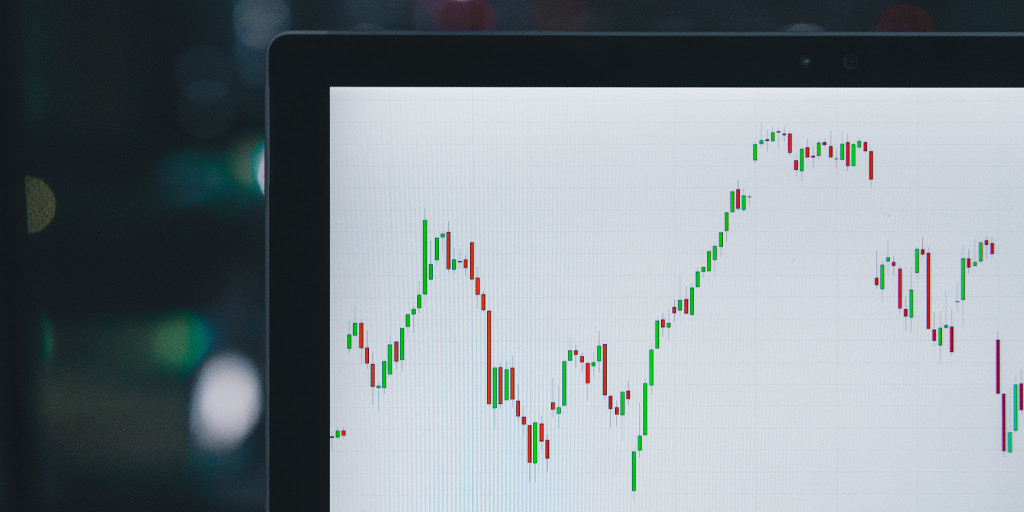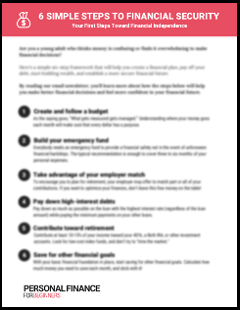Are you looking for the best index funds?
For investors who prioritize reduced risk over high returns, index funds offer a great investment opportunity.
Index funds collect money from a pool of investors to invest in securities which correspond with a given index.
This investment strategy is often low-risk and typically generates consistent, moderate returns.
However, there are a variety of index funds to choose from — each invests in different securities and tracks different markets.
How do you choose the best index fund for you?
Let’s take a look at what index funds are and how you can choose the right index fund to invest in.
What is an index fund?
Index funds are a type of mutual fund — or a group of securities purchased with money from multiple investors. Whereas stocks are denoted by three to four letters (e.g. ABC), mutual funds are indicated by five letters (e.g. ABCDE).
Money managers allocate assets to try to generate as much income as possible for investors. Since assets are spread across multiple securities, these investments are considered to be low risk compared to other investments.
Index funds, in particular, are meant to replicate the performance of a certain index, such as the S&P 500.
When you invest in an index fund, your portfolio is still made up of individual stocks. Your portfolio is just controlled by a portfolio manager who attempts to match the results of a market index.
Index funds can be a great way to save for retirement and accumulate generational wealth.
Why invest in an index fund?
Should you invest in an index fund?
Like any investment, index funds have both advantages and disadvantages that you should be aware of.
Pros of index funds
There are several upsides to investing in an index fund. This includes broad diversification, low cost, and lower expense ratios.
Broad diversification, low risk
Index funds typically invest in hundreds, if not thousands, of securities.
Firstly, broader diversification generally leads to lower risk. Diversification helps investors avoid overexposure to a particular security.
Broad diversification also generates returns from a large portion of the market with a single, relatively low-cost investment.
Lower costs
Index funds are passive investments as opposed to active investments.
Index funds simply buy and hold the securities that represent the chosen index — meaning, index fund managers don’t trade holdings as frequently as managers of actively managed funds.
As a result, you will incur fewer transaction and commission fees.
Low expense ratios
Expense ratios have a direct impact on the performance of a fund and play a big part in your overall costs.
Expense ratios are made up of the total costs of operating a fund. This includes taxes, accounting fees, management fees, etc.
Since index funds are passive investments, managers spend less time and money on research and analysis.
This leads to index funds often having much lower expense ratios, often as little as 0.2%, compared to actively managed funds.
Cons of index funds
While index funds are often a very favorable investments strategy, they’re not without their disadvantages.
Lower upside
Actively managed funds have a larger upside than index funds. Active investing strategies attempt to outperform the market over the long-term. While this is difficult to do, the potential for higher profits is much greater.
Index funds track market performance rather than try to outperform it. While this strategy is less risky, the upside is also reduced.
Lack of transparency
When investing index funds, you likely won’t be able to form a personal relationship with the people managing your money.
This can make it hard to establish trust and can be a major disadvantage for investors who prioritize accountability.
Vulnerability
Index funds are very vulnerable to downward market swings.
Index funds follow indexes whether they move up or down. If the market becomes volatile, your index fund might suffer.
Meanwhile, a good active fund manager may be able to move positions or hedge your portfolio to minimize the impact of downward swings on your investment.
How to invest in index funds
Investing in index funds isn’t a difficult task, but you should be sure to do your research to ensure that your investment strategy meets your needs.
First, you need to choose a broker. One of the more common investing mistakes is choosing a broker without researching important factors, such as commission rates, trading costs, and fund selection.
After choosing a broker, you simply need to choose the index fund that you want to invest in.
Index funds often track well-known indexes like the S&P 500; however, others may track other indexes related to specific industries or companies.
All index funds are made up of a variety of stocks and assets chosen based on factors such as the business sector, market opportunities, market capitalization, and more.
Additionally, you should take into account factors such as expense ratio and other trading costs.
List of the best index funds
In order to help you choose the index fund that best suits your needs, we’ve composed a list of the 10 best index funds to choose from.
VTSAX
Vanguard Total Stock Market Index Fund Admiral Shares (VTSAX) is a Vanguard fund designed to track the performance of the United States stock market.
Expense ratio
As of April 2019, the VTSAX expense ratio is 0.04% — 96% lower than the average expense ratio of funds with similar holdings.
Description
VTSAX is designed to provide investors with exposure to the entire U.S. equity market, including small-, mid-, and large-cap growth and value stocks. The top holdings include many familiar company names, such as:
- Microsoft
- Amazon
- Apple
- Visa
- Exxon Mobil
- And More
To learn more about VTSAX, read this review of VTSAX.
VFNIX
Vanguard 500 Index Fund Investor Shares (VFNIX) is a low-cost index fund that provides investors with exposure to the U.S. equity market.
Expense ratio
VFNIX has a current expense ratio of 0.14%.
Description
VFNIX offers exposure of 500 of the largest companies in the U.S. Together, these companies are involved in many different industries and make up for around 75% of the United States’ stock market value.
The 500 Index Fund is widely diversified within the U.S. large-capitalization market. As such it is a higher-risk, higher-reward fund.
FSMDX
Fidelity Mid Cap Index Fund (FSMDX) is designed to produce results that correspond with the United States mid-capitalization market.
Expense ratio
Compared to other funds in the same category, FSMDX has a low gross expense ratio at 0.025%.
Description
FSMDX typically invests about 80% of its assets in the securities included in the Russell Midcap Index.
While this fund has a low expense ratio compared to other funds in the same category, it also has a slightly higher risk than average compared to similar funds.
FSSNX
Fidelity Small Cap Index Fund (FSSNX) is built to generate results based on the total return of companies in the United States small-capitalization market.
Expense ratio
The current gross expense ratio of FSSNX is 0.025%.
Description
The FSSNX index fund was started in 2011 and invests at least 80% of its assets in securities included in the Russell 2000 Index.
FSSNZ has no minimum investment and a hypothetical growth of $10,000. FSSNZ is considered a fairly high-risk, high-reward index fund.
VTWAX
Vanguard Total World Stock Index Fund Admiral Shares (VTWAX) is built to offer investors exposure to stock markets around the world — U.S. included.
Expense ratio
Currently, VTWAX has an expense ratio of 0.10%.
Description
VTWAX has a $3,000 minimum investment with average returns of 4.19% since its inception.
Nearly 58% of assets are allocated in North America with the rest spread across, Europe, the Middle East, the Pacific, emerging markets, and other markets.
VCORX
Vanguard Core Bond Fund Investor Shares (VCORX) is an actively managed fund which primarily provides exposure to the U.S. investment-grade bond market.
Expense ratio
VCORX has a current expense ratio of 0.25%.
Description
The VCORX index fund invests in the U.S. Treasury, mortgage-backed, and corporate securities of varying yields and maturities.
There is a $3,000 minimum investment and the fund has a hypothetical growth of $10,000. VCORX is considered low-risk and is in the intermediate-term bond asset class.
VWEHX
Vanguard High-Yield Corporate Fund Investor Shares (VWEHX) invests in a portfolio made up of medium- and lower-quality corporate bonds, sometimes called to as “junk bonds.” The fund was created in 1978.
Expense ratio
VWEHX has a current expense ratio of 0.23%.
Description
This fund has a minimum investment of $3,000 and has produced average returns of 8.29% since inception.
This fund purchases high-rated junk bonds in order to generate consistent income and reduce defaults and principal loss.
BARDX
iShares Developed Real Estate Index Fund Investor A Shares (BARDX) tracks the results of the FTSE EPRA/NAREIT Developed Index, which is composed of real estate equities in developed markets.
Expense ratio
BARDX has a net expense ratio of 0.49% as of May 2018.
Description
This fund has a $1,000 minimum investment and has a hypothetical growth of $10,000.
BARDX invests at least 90% of its assets in securities of the underlying index and in depositary receipts representing securities of the underlying index.
VIPSX
Vanguard Inflation-Protected Securities Fund Investor Shares (VIPSX) invests in securities that seek to provide a “real” return. This strategy helps protect investors from the eroding effect of inflation.
Expense ratio
VIPSX has a current expense ratio of 0.20%.
Description
This low-risk fund has a $3,000 minimum investment and invests in bonds that are backed by the full faith and credit of the federal government.
Because of this investment strategy, payments depend on inflation changes as well as bond price movements.
FPADX
Fidelity Emerging Markets Index Fund (FPADX) is focused on providing returns based on the total returns generated by emerging markets.
Expense ratio
FPADX has a current gross expense ratio of 0.075%.
Description
FPADX typically invests at least 80% of assets in securities included in the MSCI Emerging Markets Index and in depository receipts representing securities included in the index.
There is no minimum investment and the fund is considered a high-risk, high-reward fund.
How to choose the best index fund for you
While these 10 index funds cover a wide range of markets, offer fair returns, and accommodate investors willing to take on different levels of risk, that doesn’t mean that they are all a good option for you.
In order to choose the right index fund for you, there are several factors to consider.
First, you need to determine your goals and how much risk you are willing to take on. While index funds are a typically low-risk investment, there are still varying levels of risk within this investment category.
You also need to consider the expense ratio. Generally speaking, all else being equal, funds with lower expense ratios are more favorable compared to funds with higher expense ratios.
Diversification is also a very important factor. You should generally look for index funds that spread their assets across a variety of sectors. Index funds which focus heavily on one market are more vulnerable to market swings in that industry.
Lastly, do your own research to find out as much as possible about the management team for a given fund. As stated earlier, index funds often lack transparency and make it difficult to form relationships with portfolio management.
As your portfolio manager controls the securities that your money invests in, it’s important to find a management team that is reliable, trustworthy, and has a strong reputation.
Conclusion
Ultimately, index funds can be a great opportunity for investors to generate moderate long-term profits without taking on excessive risk.
That being said, every investment has risk — making it important to do extensive research to find the best investment opportunity for you.
With a variety of index funds to choose from, it’s important to understand what qualities to look for and which index funds have a history of reliable returns.

